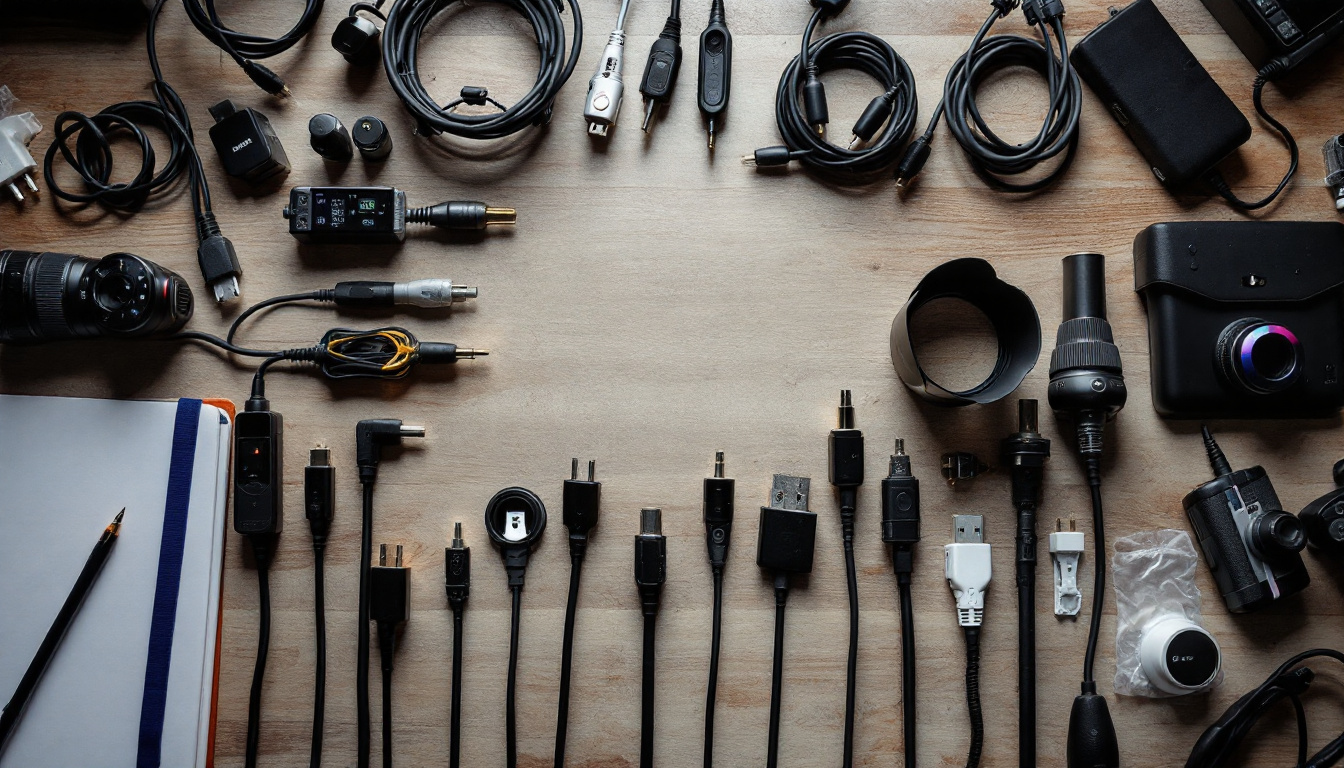
In the world of lighting design and installation, the importance of using the right components cannot be overstated. Among these components, the cord plug stands out as a critical element that ensures safety, functionality, and efficiency in lighting setups. This article provides a comprehensive checklist for lighting professionals, detailing the essential considerations when selecting and utilizing cord plugs in various applications.
Cord plugs serve as the interface between the electrical supply and the lighting fixture. They come in various shapes, sizes, and configurations, each designed for specific applications. Understanding the different types of cord plugs available is crucial for lighting professionals to ensure compatibility and safety in their projects.
There are several types of cord plugs, each designed for different voltages, current ratings, and applications. The most common types include NEMA plugs, IEC connectors, and specialized plugs for outdoor use. NEMA plugs are widely used in North America and are categorized based on their amperage and voltage ratings. On the other hand, IEC connectors are popular in Europe and are often used for appliances and equipment requiring a detachable power cord.
When selecting a cord plug, it is essential to consider the specific requirements of the lighting fixture, including its power consumption and intended use. For instance, outdoor lighting fixtures may require weather-resistant plugs, while indoor fixtures might prioritize aesthetics and ease of installation. Additionally, some cord plugs come with built-in features such as surge protection or integrated switches, which can enhance the functionality and safety of the lighting system. Understanding these features can help professionals make informed decisions that align with their project needs.
Safety should always be a top priority for lighting professionals. Cord plugs must comply with relevant safety standards and certifications to minimize the risk of electrical hazards. In North America, for instance, Underwriters Laboratories (UL) and the Canadian Standards Association (CSA) provide certifications that ensure products meet safety requirements.
When sourcing cord plugs, professionals should look for these certifications on product packaging or specifications. This not only ensures compliance with safety regulations but also provides peace of mind that the components used in lighting installations are reliable and safe for use. Furthermore, staying updated on changes in safety standards is critical, as regulations can evolve to address new technologies or emerging safety concerns. Regular training and resources from industry organizations can help lighting professionals remain informed about best practices and ensure that their installations are not only functional but also adhere to the highest safety standards.
Selecting the right cord plug involves several considerations that can impact the overall performance and safety of a lighting installation. Below are key factors that lighting professionals should keep in mind while making their selections.
Every cord plug has a specific amperage and voltage rating, which indicates the maximum electrical load it can safely handle. It is crucial to match these ratings with the requirements of the lighting fixture to prevent overheating and potential electrical failures. Overloading a cord plug can lead to dangerous situations, including electrical fires.
For instance, if a lighting fixture requires a 15-amp plug, using a 10-amp plug could result in overheating and failure. Therefore, always check the specifications of both the lighting fixture and the cord plug to ensure compatibility. Additionally, it is advisable to consider future needs; if there is a possibility of upgrading to a higher wattage fixture, opting for a plug with a higher amperage rating may be a wise choice to accommodate potential changes without needing to replace the plug later.
Lighting installations may take place in various environments, each with unique challenges. Outdoor installations, for example, require cord plugs that can withstand moisture, UV exposure, and temperature fluctuations. Choosing plugs with appropriate weatherproof ratings, such as IP ratings, can help ensure longevity and safety in adverse conditions.
In contrast, indoor installations may focus more on aesthetics and ease of use. Professionals should consider the visual appearance of the cord plugs and how they integrate with the overall design of the lighting scheme. For instance, cord plugs that are sleek and modern can enhance the visual appeal of a contemporary space, while vintage-style plugs may be more suitable for retro-themed environments. Furthermore, the ease of access to these plugs is essential; ensuring that they are positioned conveniently can facilitate maintenance and adjustments, ultimately contributing to the efficiency of the lighting setup.
Additionally, it’s important to consider the materials used in the construction of cord plugs. High-quality materials can provide better durability and resistance to wear and tear, especially in high-traffic areas or locations where they may be exposed to physical stress. For example, plugs made from reinforced plastics or metals can offer enhanced protection against impacts and environmental factors, ensuring that they remain functional over time.
Proper installation of cord plugs is essential for ensuring safety and functionality. Following best practices during installation can help mitigate risks and enhance the performance of lighting systems. A well-executed installation not only provides reliable operation but also extends the lifespan of the equipment, ultimately leading to cost savings and increased user satisfaction.
When connecting cord plugs to lighting fixtures, it is vital to follow proper wiring techniques. This includes stripping the insulation from the wire ends correctly and ensuring that connections are secure and well-insulated. Loose connections can lead to arcing, which poses a significant fire hazard. Furthermore, it is important to choose the right gauge of wire for the application, as using a wire that is too thin can result in overheating and potential failure of the lighting system.
Additionally, professionals should use the appropriate tools for the job, such as wire strippers and crimping tools, to ensure that connections are made correctly. Following the manufacturer’s instructions for wiring can also help avoid common pitfalls. It is also advisable to familiarize oneself with local electrical codes and regulations, as they may dictate specific requirements for wiring installations. This knowledge not only enhances safety but also ensures compliance with legal standards, which can prevent future complications.
After installation, testing the cord plugs and the overall lighting system is crucial. This step ensures that all components are functioning correctly and safely. Using a multimeter to check for proper voltage and continuity can help identify any issues before the system is put into operation. Additionally, conducting a load test can verify that the system can handle the electrical demand without overheating or causing interruptions.
Moreover, performing a visual inspection of the connections and the cord plugs can reveal any potential problems, such as frayed wires or loose connections. Addressing these issues before finalizing the installation can save time and resources in the long run. It’s also beneficial to document the installation process, including any modifications made and the results of the testing. This documentation can serve as a valuable reference for future maintenance or troubleshooting, ensuring that any subsequent work on the system is informed by the original installation details.
Even with careful selection and installation, cord plugs may require maintenance and troubleshooting over time. Understanding common issues and how to address them is essential for lighting professionals.
One of the most common issues encountered with cord plugs is wear and tear. Frequent plugging and unplugging can lead to loose connections or damaged pins, which can compromise the safety and functionality of the lighting system. Regularly inspecting cord plugs for signs of damage can help identify problems before they escalate.
Another issue to watch for is overheating. If a cord plug feels excessively hot to the touch during operation, it may indicate an overload or a faulty connection. In such cases, it is crucial to disconnect the power and investigate the cause of the overheating.
When faced with a damaged cord plug, lighting professionals must decide whether to repair or replace it. Minor issues, such as loose connections, can often be fixed with proper tools and techniques. However, if the plug shows significant signs of wear or damage, replacement is usually the safer and more effective option.
When replacing a cord plug, it is essential to select a new plug that meets the same specifications as the original to maintain safety and compatibility. Additionally, professionals should dispose of damaged plugs responsibly to prevent hazards.
The lighting industry is continually evolving, and innovations in cord plug technology are making installations safer and more efficient. Staying informed about these advancements can help lighting professionals enhance their work.
With the rise of smart technology, cord plugs are now available with integrated smart features. These smart cord plugs can be controlled remotely via smartphone apps, allowing users to manage lighting systems more efficiently. Features such as scheduling, dimming, and energy monitoring can significantly enhance the user experience.
Integrating smart cord plugs into lighting installations can also lead to energy savings and improved functionality. However, it is essential to ensure that the smart plugs are compatible with the existing lighting systems and meet safety standards.
As sustainability becomes a priority in the lighting industry, eco-friendly cord plugs are gaining popularity. These plugs are often made from recyclable materials and designed to minimize energy consumption. Choosing eco-friendly options not only supports environmental efforts but can also appeal to clients looking for sustainable solutions.
Lighting professionals should consider incorporating these eco-friendly products into their projects to meet the growing demand for sustainable lighting solutions.
In conclusion, cord plugs are a fundamental component of lighting installations that require careful consideration and attention to detail. By understanding the various types of cord plugs, adhering to safety standards, and following best practices for installation and maintenance, lighting professionals can ensure the reliability and safety of their projects.
Staying informed about innovations in cord plug technology will further enhance the capabilities of lighting professionals, allowing them to deliver superior solutions to their clients. By following this essential checklist, lighting contractors can navigate the complexities of cord plugs with confidence, ensuring successful and safe lighting installations.
Ready to elevate your lighting projects with the highest quality cord plugs and lighting components? Look no further than LumenWholesale. Our commitment to empowering contractors with spec-grade lighting products at unbeatable wholesale prices means you can trust us to provide the reliable, high-performance lighting essentials your projects demand. With our extensive selection that meets rigorous industry standards, free shipping on bulk orders, and no hidden fees, LumenWholesale is your go-to source for superior lighting solutions. Don’t compromise on quality or value—Wholesale Lighting at the Best Value is just a click away.

Discover how the right electrical equipment tools can significantly boost profits for lighting contractors.

Discover the pitfalls that even seasoned lighting contractors face with ballast lighting.
Discover the must-know essentials of 4ft LED bulbs for lighting contractors.

Discover strategies to enhance your lighting business with “Pathway Light: Maximizing Success for Lighting Contractors.” Learn how to optimize operations, boost client satisfaction, and stay ahead in the competitive lighting industry..